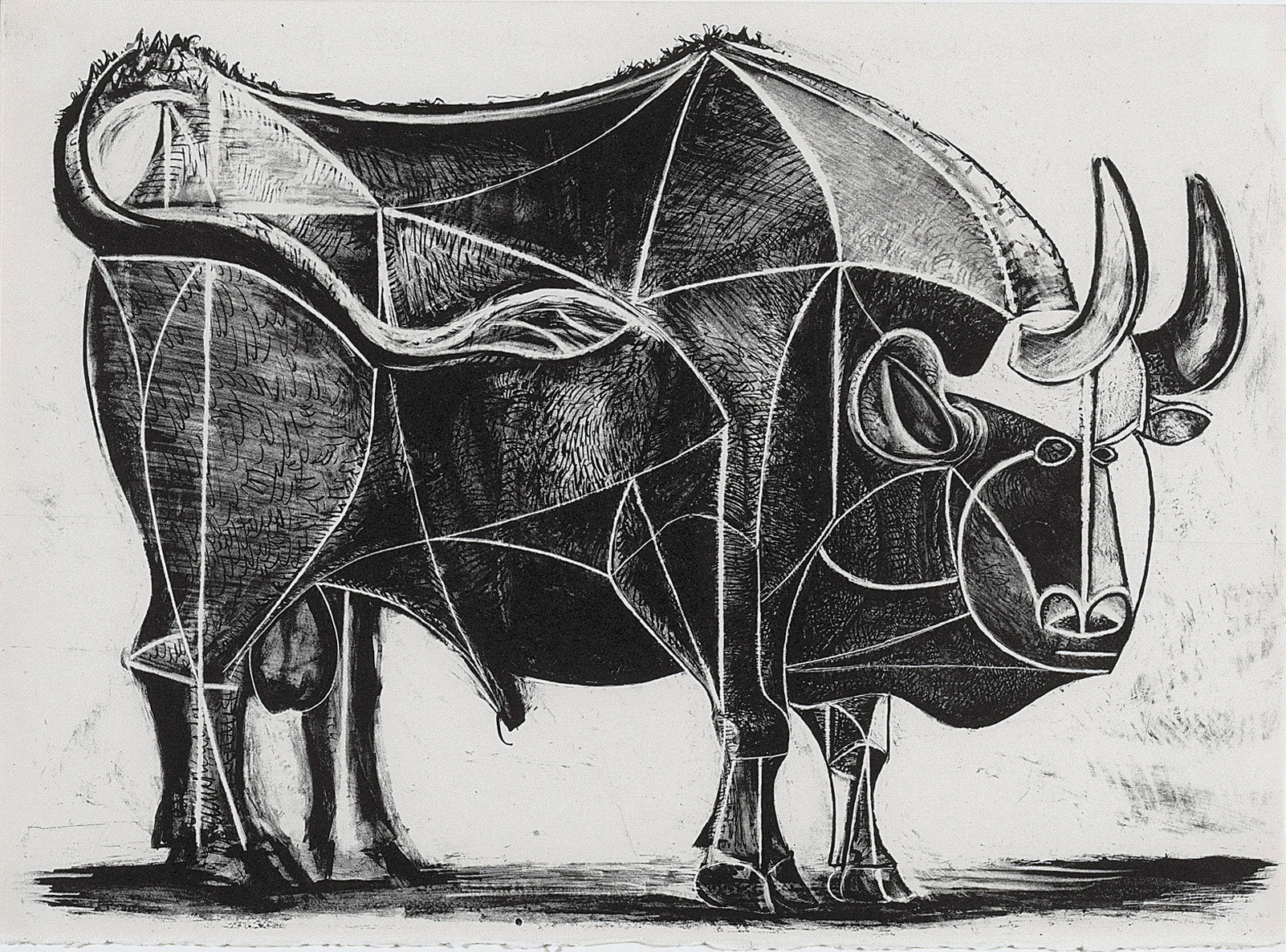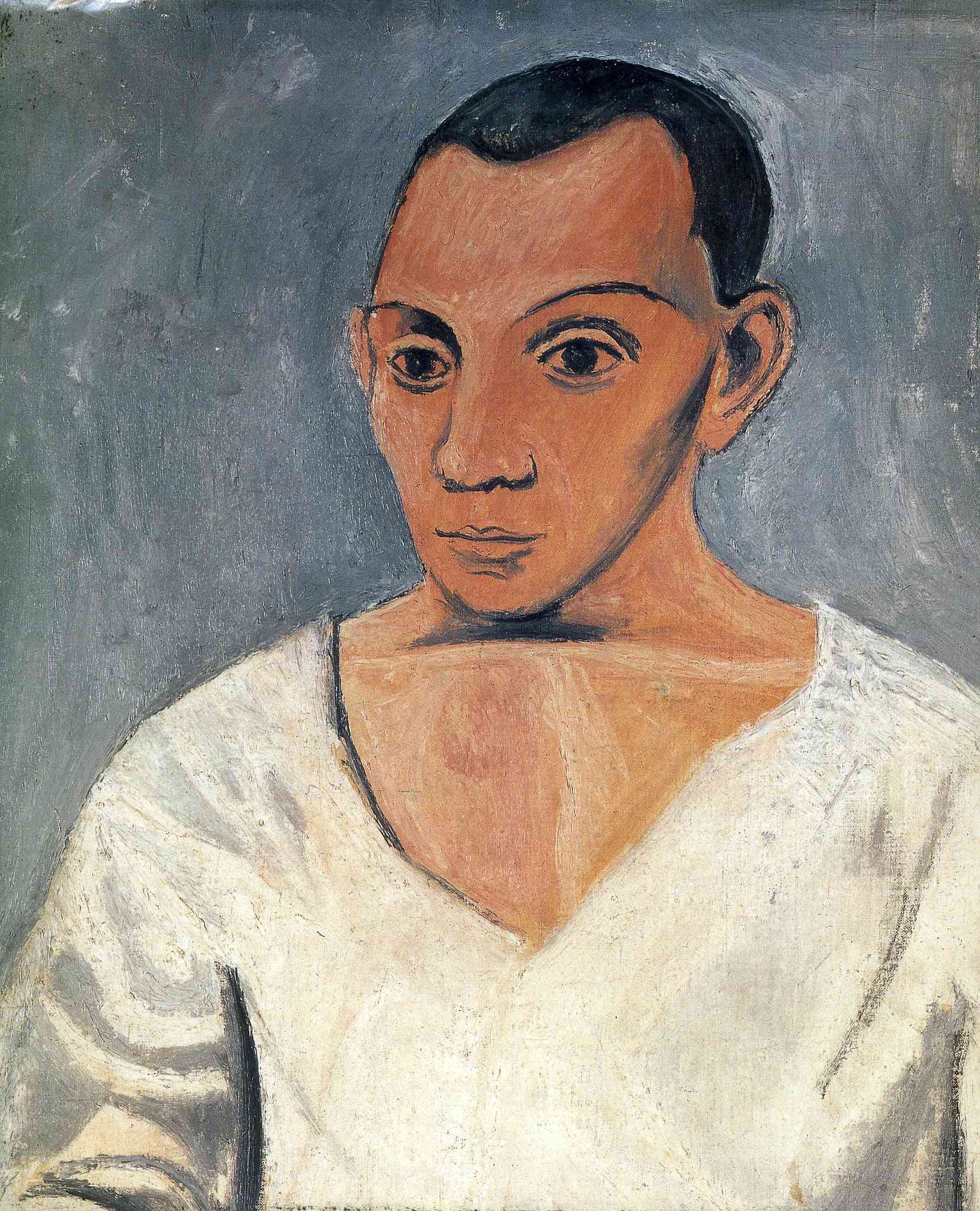



Bull - plate 4
lithograph • -
Pablo Picasso created 'Bull' around the Christmas of 1945. 'Bull' is a suite of eleven lithographs that have become a master class in how to develop an artwork from the academic to the abstract. In this series of images, all pulled from a single stone, Picasso visually dissects the image of a bull to discover its essential presence through a progressive analysis of its form. Each plate is a successive stage in an investigation to find the absolute 'spirit' of the beast.
To start the series, Picasso creates a lively and realistic brush drawing of the bull in lithographic ink. It is a fresh and spontaneous image that lays the foundations for the developments to come. Picasso used the bull as a metaphor throughout his artwork but he refused to be pinned down as to its meaning. Depending on its context, it has been interpreted in various ways: as a representation of the Spanish people; as a comment on fascism and brutality; as a symbol of virility; or as a reflection of Picasso's self image.
Plate 4 sees the artist start to abstract the structure of the bull by simplifying and outlining the major planes of its anatomy. Ten years earlier Picasso had said that "A picture used to be a sum of additions. In my case a picture is a sum of destructions." In view of this statement, lithography seems to be the most natural choice of media for this series of prints. One of the technical advantages of lithography over other printmaking techniques is that you can both add to and subtract from the image with relative ease.
 Pablo Picasso
Pablo Picasso